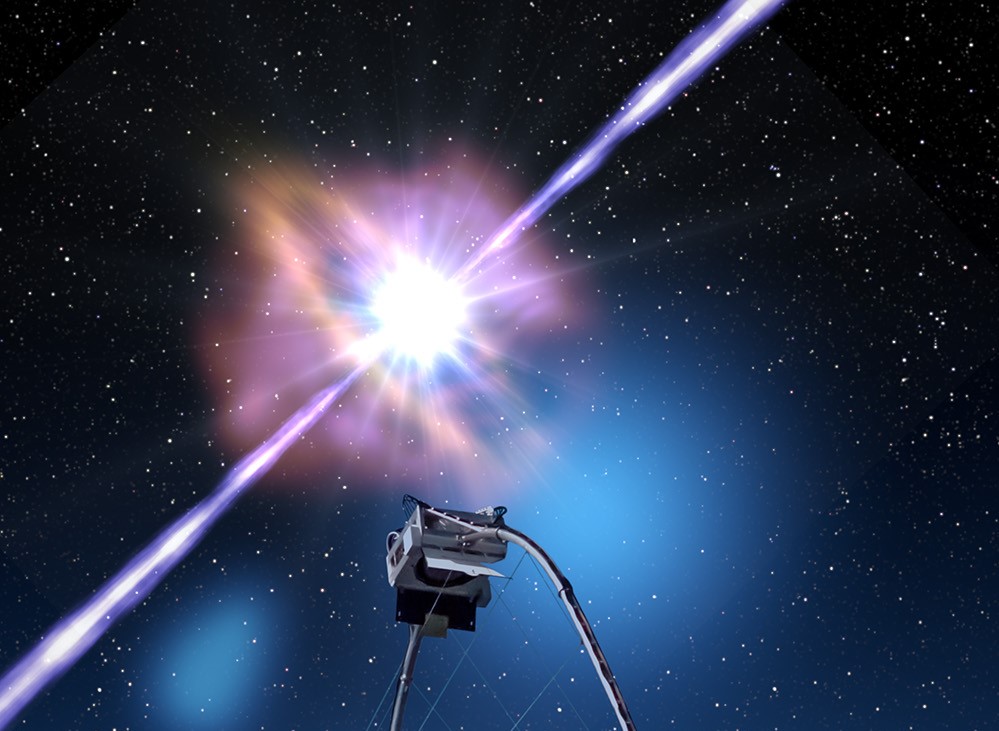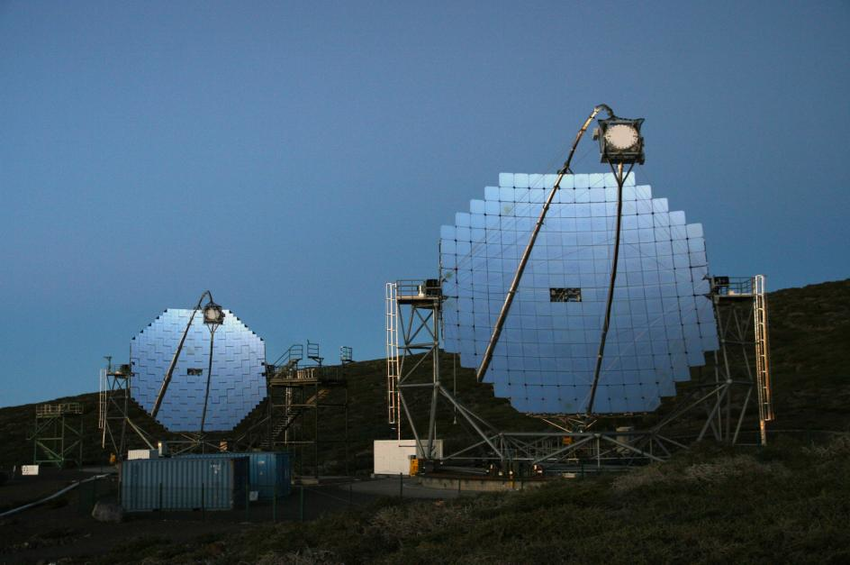
After a decade-long search, scientists have for the first time detected a gamma-ray burst in very-high-energy gamma light. This ground-breaking achievement by MAGIC provides critical new insight for understanding the physical processes at work in the most powerful cosmic explosions.
Gamma-ray bursts (GRBs) are the most violent explosions in the Universe, suddenly appearing in the sky, about once per day. They are thought to result from the collapse of massive stars or the merging of neutron stars in distant galaxies.
The first GRB detected by the MAGIC telescopes, known as GRB 190114C, reveals for the first time the highest-energy photons measured from these objects. On January 14th, 2019, a GRB was discovered independently by two space satellites: the Neil Gehrels Swift Observatory and the Fermi Gamma-ray Space Telescope.
The event was named GRB 190114C, and within 22 seconds, its coordinates in the sky were distributed as an electronic alert to astronomers worldwide, including the MAGIC Collaboration, which operates two 17m diameter Cherenkov telescopes located in La Palma, Spain. An automatic system processes in real time the GRB alerts from satellite instruments and makes the MAGIC telescopes point rapidly to the sky position of the GRB in just 50 seconds after the beginning of the GRB.

“After more than 50 years since GRBs were first discovered, many of their fundamental aspects still remain mysterious”, says Razmik Mirzoyan, the Spokesperson of the MAGIC Collaboration.
“The discovery of gamma-ray emission from GRB 190114C in the new, TeV window of the electromagnetic spectrum shows that the GRB explosions are even more powerful than thought before,” he added.
Two papers in the Nature issue of 21 November describe the detection of the gamma rays up to TeV energies with MAGIC and the indication that inverse Compton scattering is the responsible process at work.
Armenian physicists from the A Alikhanian National Lab participated in both the MAGIC and the H.E.S.S. collaborations. Initially, the technique of arrays of Imaging Atmospheric Cherenkov Telescopes (IACTs) had been pioneered at Mt. Aragats in the 1980s. A setup was planned around a large cosmic ray array, named ANI. However, due to the collapse of the Soviet Union, construction of the array stopped and two leading physicists, Felix Aharonyan and Razmik Mirzoyan, moved from the Yerevan Physics Institute to Germany.
With colleagues from the Max Planck Institutes in Munich and Heidelberg, Armenian physicists launched the first system of European ACTs on La Palma, Canary Islands (HÅGRÀ). The IACT technique, and the Armenian design, proved to be very successful and later larger telescopes were commissioned on La Palma (MAGIC) and in Namibia (H.E.S.S.).
Sources:
- Armenian Physicists Participate in Discovery of Highest Energy Photons
- MAGIC telescopes detect the first gamma-rays burst at very high energies
- Detection of VHE gamma-ray emission from GRB190829A
- A very-high-energy component deep in the γ-ray burst afterglow
- Teraelectronvolt emission from the γ-ray burst GRB 190114C
- Observation of inverse Compton emission from a long γ-ray burst








